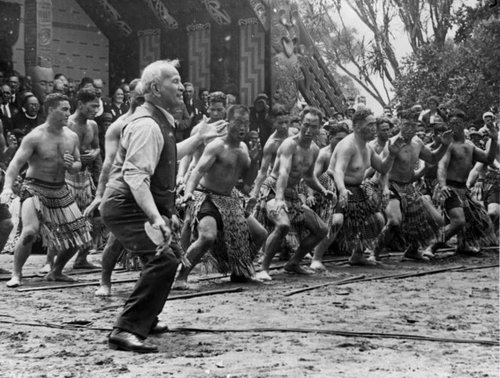
You can listen to our Client Services Co-ordinator Sarah Johnston talking about the 1963 celebrations at Waitangi with RNZ’s Jesse Mulligan here. That year was marked by the presence of Her Majesty the Queen (who landed at Waitangi for her second tour of New Zealand on 6 February) and by a speech by Sir Turi Carroll (Ngāti Kahungunu), President of the New Zealand Māori Council, calling on the government to recognise the Treaty in law and make the day a public holiday – it didn’t become a public holiday until 1974.
The first protests at Waitangi can be heard in New Zealand Broadcasting Corporation radio recordings made at the 1971 commemorations. That year, the newly-formed action group Ngā Tamatoa appeared at the Treaty Grounds, and gave voice to the concerns of a younger generation of Māori. Two Māori radio programmes and two documentaries about the 1971 protests can all be heard in online catalogue.
Ngā Tamatoa’s actions meant the media was forced to examine Māori grievances around the Treaty more closely and radio programmes like these represent the start of greater consideration by the national broadcaster about the Treaty and its implications for modern-day New Zealand.
Prior to this, there is not a lot of archived coverage of Waitangi Day itself – and what there is seems to strongly focus on the 1840 Treaty signing as an historic event, something that belonged in our past.
One outstanding exception to this was Sir Apirana Ngata’s famous speech at the 1940 Treaty Centennial celebrations, in which he clearly told Pākēha about ongoing Māori concerns at the way the Treaty had been disregarded in the intervening 100 years.

Photograph of Apirana Ngata taking the lead in a haka on Waitangi Day at the centennial celebrations at Waitangi, taken by Bert Snowden .
Hero image: View of the verandah of the Treaty house, Waitangi, New Zealand, looking east across the grounds and including the meeting house. Photographed by Whites Aviation in 1947 .